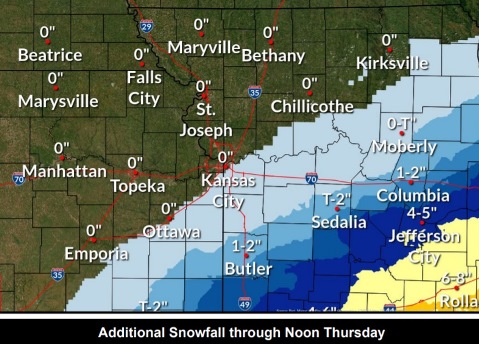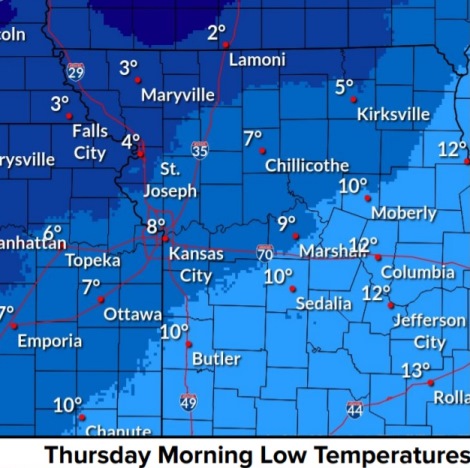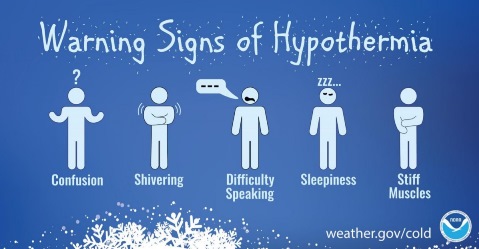Supporters of a modified Safe and Welcoming ordinance turned out to make their views known at a committee meeting Jan. 24.
The modified Safe and Welcoming ordinance advanced for consideration to the full commission meeting after unanimous approval Jan. 24 in the Unified Government Public Works and Safety Committee.
The main changes to the previous ordinance under consideration, according to UG attorney Susan Alig, include the UG contracting with a program administrator to administer the identification program; the program administrator, not the UG, will issue the ID; the UG will not obtain or retain records that are provided to the program administrator to obtain an ID; the UG will require the program administrator to defend against disclosure of these records; and the UG would require the program administrator to provide language assistance for those applying for the ID.
Some of the changes were made because UG attorneys were concerned about the ordinance conflicting with requirements of federal grants, that the original proposal could have a detrimental effect on local – federal task forces, that the former proposal exceeded the commission’s authority over the sheriff’s offices policies, or violated federal law, according to Alig. The changes have addressed these concerns.
The different sides were in general agreement at the Jan. 24 meeting, with the Safe and Welcoming Coalition endorsing the revised ordinance. The police chief and sheriff, who appeared at the meeting, had no objections to the new ordinance.
There were around 20 persons who spoke during a community comment time at the Jan. 24 meeting, all in favor of the proposed ordinance.
Monsignor Stuart Swetland, president of Donnelly College, said he was strongly in favor of the ordinance. The current immigration system is very broken and needs comprehensive reform, he said. However, because of the impasse at the federal level, programs such as the ordinance are one of the best things they can do for the community, economically and morally, he said.
He said he had seen similar programs in other places where he served as an educator, including in Illinois. That program was very successful and made economic transitions much easier. Half of that county put the ID program into place while the other half waited, he said. The economic benefit for the first half was so strong that within weeks, the second half began to be involved.
He said he had seen, as an educator, that some people are fearful of interacting with the police, and he wants to eliminate that for the safety of all, so everyone could have access to public safety.
Judy Ancel of the Cross Border Network of Kansas City, who has been very active in the safe and welcoming effort, said the proposed ordinance would be beneficial to the whole community, encouraging trust and cooperation between law enforcement and local residents. It would also facilitate health department visits, she said.
Naomi Tolentino with Advocates for Immigrant Rights, said the ordinance would provide residents with tools to better protect themselves and their families.
“All people deserve a chance for a safe and dignified life,” she said, adding they should be able to live without fear of deportation.
She said she was asking for approval for a neighbor who was too afraid to report a crime to police, for parents who have difficulty enrolling children in school because they don’t have an ID, for people who can’t check a book out of a library, and students who can’t attend prom because they don’t have an ID.
Sarah Waggoner said the Rosedale Development Association supported the passage of the Safe and Welcoming ordinance, because many Rosedale residents face barriers in everyday life due to not having an ID; and because the RDA’s summer youth employment program finds it difficult to pay youth who do not have IDs or bank accounts.
If the ordinance is thoughtfully implemented in partnerships with Wyandotte County institutions, it would be useful to services like check cashing, she said.
She said she believes that if the ordinance is passed, there would be better communications with the police department, making all neighborhoods safer.
Waggoner said that victims of domestic violence often face a lack of easy access to receive new copies of documents to begin to rebuild their lives. Sometimes these documents such as a state ID and a birth certificate are not easily available to victims, she said. By offering an alternative ID, it would make day-to-day functioning a little easier for Wyandotte County residents and remove one of the barriers to get people back on their feet after a setback, she said.
Victoria Arcano, a former KCK resident, said she worked about a year and a half for the KCK police department, and she currently works at a domestic violence shelter. She said survivors of violence have been negatively impacted by current policies or practices. The impact on survivors and families has been dangerous, she said. If families knew federal immigration authorities could be called as a consequence of them filing for protection, they may not have filed, she said.
She also said many people had been unable to access COVID-19 testing because they did not have IDs.
Connie Brown Collins, founder of Voter Rights Network of Wyandotte County, said she supported the Safe and Welcoming ordinance.
She noted that this would offer a means of legal ID for seniors, disabled and homebound individuals.
She cited a case of a man born in Georgia who did not have a birth certificate, as he was born in the 1930s in the segregated South, and many births were at homes and not in hospitals. It took months for him to get a simple record of his birth, she said. One neighbor, who was born in North Carolina, gave up trying to get a birth certificate, she said. The lack of ID can affect their ability to fly or to utilize military veterans services, she added. The ID cards can help them navigate necessities.
Kim Weaver, a resident, supported the Safe and Welcoming ordinance. She said the KCK police already have an ID program for some individuals, such as the homeless, and while they are grateful for it, there is a need for other residents to have an ID.
The ordinance would affect more than the immigrant community, she added. It is difficult for the unsheltered to get back to housing without an ID, she said.
She said some immigrants and residents were uncomfortable meeting with census takers during the census, which affected the numbers and dollars coming into Wyandotte County.
Sister Therese Bangert, justice advocate for the Sisters of Charity of Leavenworth, said there has been a strong coalition in the state Legislature for immigration reform.
Self-interest, she said, is a part of how this ordinance would improve the quality of life for residents. She cited articles that showed the economy would grow with immigration reform, and included statistics from other communities where immigration reform sustained the economy.
Lauren Bonds, an attorney working to support the Safe and Welcoming Coalition for about four years, also supported the ordinance.
Legal concerns about restrictions were one of the major barriers to the ordinance, she said. The original ordinance placed the burden on local law enforcement, while the UG worked to revise the bill and eliminate any provisions that would expose the UG to any legal consequences. There were also provisions to protect members of the community.
This draft of the current proposed ordinance would stand up to scrutiny by even the most conservative jurist, Bonds said. The Safe and Welcoming ordinance will help protect immigrants, the unhoused and the recently incarcerated, who would be able to access services, virtually at no cost to the UG, she said.
Leslie Butsch, a Kansas City, Kansas, resident and a social worker, said she had worked with children, including a 16-year-old who was trying to support the entire family on income from a job at a grocery store. She worked to help get a state-issued ID, and there are expensive and time-consuming hoops that people have to go through, she said.
“I want to live in a place where everyone feels a sense of belonging,” she said.
Randy Lopez, a Kansas City, Kansas, resident who is president of the Kansas City, Kansas, Board of Education, said he was appearing as a resident to ask support for the Safe and Welcoming ordinance. The school board in January 2020 approved its support for the ordinance, he said.
The ordinance would help to continue to improve the trust between the community and police department, he said.
The school district heard from constituents, staff and students on how this would positively affect thousands of students, he said.
Dr. Yolanda Huet-Vaughn, a family physician for 39 years in Kansas City, Kansas, said some of the children of immigrant parents have had to go through the stress of wondering whether their parents would be deported.
She cited an example of one parent who was arrested and taken to federal immigration authorities despite their immigration application in process. They lost their home, and had to pay thousands to stop the deportation, she said. They were detained two years before winning their case.
Some immigrant residents have been assaulted, robbed, their car stolen, and were afraid to report it to the police because they were afraid of being turned over to federal immigration authorities, she said.
The stress they face creates bad health consequences, including decreased sleep, increased risk of cancer, panic attacks and high blood pressure, and it would be a much healthier community if people could be certain they would not be turned over to immigration authorities, she said.
Irene Caudillo, president and CEO of El Centro, said El Centro favors this Safe and Welcoming ordinance.
It will ensure Wyandotte County is a safe and welcoming place, not just for those they serve, but for all residents of Wyandotte County, she said.
Nothing in the proposed ordinance will limit public safety officers from responding to criminal activity, she said. There is no free pass to anyone to commit crime, and everyone is accountable, she said.
Some immigrant families have lived in the community an average of 20 years, and this is a step to build trust and cooperation between local government and enforcement, she said.
The proposed ordinance will allow people to go about their lives without fear and intimidation, she said.
“Wyandotte County stands to benefit from municipal ID to bring us out of the shadows and empower us to interact with the local government,” she said. “The ID cards promote trust and inclusion. The strongest communities are those where every resident feels like they belong as a valued member of the community.”
Diosselyn Tot, a Wyandotte County resident, said she supports the proposed ordinance, and it would embrace full diversity of what make the community a home.
Immigrant entrepreneurs have helped bring back life to the streets and vacant lots that have been abandoned in Kansas City, Kansas, she said. She strongly urged the ordinance’s passage.
“We have been fighting for about five years now, and I believe it is time to make a decision,” she said.
Evelyn Hill, with Avenue of Life, was in support of the proposed ordinance, and said data showed it would help keep neighborhoods safe and encourage cooperation with law enforcement.
“We believe Wyandotte County should remain a place where people come from all nations to become law-abiding members of Wyandotte County,” she said.
According to UG staff, state Sen. Pat Pettey sent in a written statement in support of the Safe and Welcoming ordinance. Many immigrant residents have no ID, and without it, it is difficult to transact the business of daily lives. She encouraged the passage of the ordinance.
District Attorney Mark Dupree also sent in a written statement, according to UG staff. When many people do not feel safe in their interactions with law enforcement, that affects the outcome of criminal cases, he stated. He was in full support of the ordinance, as he believes it will help bring real criminals to justice, and it will assist victims to cooperate with law enforcement.
Kansas City, Kansas, Police Chief Karl Oakman said the proposed ordinance as written does not affect the police department’s operations. He said the Safe and Welcoming Committee and police representatives had a great meeting. Also, he said the ordinance will not affect the police department’s relationships with its federal partners.
Sheriff Dan Soptic said he also met with the Safe and Welcoming Committee. While the ordinance does not specifically apply to the Sheriff’s Department, Soptic expressed a willingness to work with everyone in the community as relates to the Safe and Welcoming ordinance.
UG Commissioner Harold Johnson said he agreed with one of the comments that if Wyandotte County can get this passed, then the program could serve as a model for other communities in the area.
The committee passed the ordinance unanimously, with Commissioner Mike Kane adding that he wanted the full commission to have a chance to have a discussion on it. The ordinance next would go to the full commission for approval.







